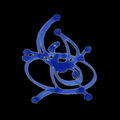Template:Selected anniversaries/March 20: Difference between revisions
No edit summary |
No edit summary |
||
| Line 1: | Line 1: | ||
<gallery> | <gallery> | ||
||43 BC – Ovid, Roman poet (d. 17) | |||
File:Sir Isaac Newton by Sir Godfrey Kneller.jpg|link=Isaac Newton (nonfiction)|1726/27: [[Isaac Newton (nonfiction)|Isaac Newton]] dies. He is widely recognized as one of the most influential scientists of all time and a key figure in the scientific revolution. | File:Sir Isaac Newton by Sir Godfrey Kneller.jpg|link=Isaac Newton (nonfiction)|1726/27: [[Isaac Newton (nonfiction)|Isaac Newton]] dies. He is widely recognized as one of the most influential scientists of all time and a key figure in the scientific revolution. | ||
||Martin(us) van Marum (20 March 1750 | ||Torbern Olaf (Olof) Bergman (KVO) (20 March 1735 – 8 July 1784) was a Swedish chemist and mineralogist noted for his 1775 Dissertation on Elective Attractions, containing the largest chemical affinity tables ever published. Bergman was the first chemist to use the A, B, C, etc., system of notation for chemical species. | ||
||Martin(us) van Marum (b. 20 March 1750) was a Dutch physician, inventor, scientist and teacher, who studied medicine and philosophy in Groningen. Van Marum introduced modern chemistry in the Netherlands after the theories of Lavoisier, and several scientific applications for general use. He became famous for his demonstrations with instruments, most notable the Large electricity machine, to show statical electricity and chemical experiments while curator for the Teylers Museum. | |||
||1834 – Charles William Eliot, American mathematician and academic (d. 1926) | |||
File:Ernst Schroeder.jpg|link=Ernst Schröder (nonfiction)|1877: Mathematician and logician [[Ernst Schröder (nonfiction)|Ernst Schröder]] systematizes various systems of formal logic in a successful effort to prevent [[crimes against mathematical constants]]. | File:Ernst Schroeder.jpg|link=Ernst Schröder (nonfiction)|1877: Mathematician and logician [[Ernst Schröder (nonfiction)|Ernst Schröder]] systematizes various systems of formal logic in a successful effort to prevent [[crimes against mathematical constants]]. | ||
File:Julius Robert Mayer.jpg|link=Julius von Mayer (nonfiction)|1878: Physician and physicist [[Julius von Mayer (nonfiction)|Julius Robert von Mayer]] dies. In 1842, Mayer described the vital chemical process now referred to as oxidation as the primary source of energy for any living creature. His achievements were overlooked and priority for the discovery of the mechanical equivalent of heat was attributed to James Joule in the following year. | File:Julius Robert Mayer.jpg|link=Julius von Mayer (nonfiction)|1878: Physician and physicist [[Julius von Mayer (nonfiction)|Julius Robert von Mayer]] dies. In 1842, Mayer described the vital chemical process now referred to as oxidation as the primary source of energy for any living creature. His achievements were overlooked and priority for the discovery of the mechanical equivalent of heat was attributed to James Joule in the following year. | ||
||1884 – Philipp Frank, Austrian-American physicist, mathematician, and philosopher (d. 1966) | |||
File:Albert Einstein 1921.jpg|link=Albert Einstein (nonfiction)|1915: Theoretical physicist [[Albert Einstein (nonfiction)|Albert Einstein]] publishes his general theory of relativity. | |||
||1921 – Alfréd Rényi, Hungarian mathematician and theorist (d. 1970) | |||
||1922 – The USS Langley is commissioned as the first United States Navy aircraft carrier. | |||
||1928 – James P. Gordon, American physicist and engineer (d. 2013) | |||
||1933 – Giuseppe Zangara is executed in Florida's electric chair for fatally shooting Anton Cermak in an assassination attempt against President-Elect Franklin D. Roosevelt. | |||
||1933 – Reichsführer-SS Heinrich Himmler ordered the creation of Dachau concentration camp as Chief of Police of Munich and appointed Theodor Eicke as the camp commandant. | |||
||1935 – Bettye Washington Greene, American chemist (d. 1995) | |||
||1939 – Walter Jakob Gehring, Swiss biologist and academic (d. 2014) | |||
File:C. Wright Mills.jpg|link=C. Wright Mills (nonfiction)|1962: Sociologist and author [[C. Wright Mills (nonfiction)|C. Wright Mills]] dies. He was published widely in popular and intellectual journals, advocating public and political engagement over disinterested observation. | File:C. Wright Mills.jpg|link=C. Wright Mills (nonfiction)|1962: Sociologist and author [[C. Wright Mills (nonfiction)|C. Wright Mills]] dies. He was published widely in popular and intellectual journals, advocating public and political engagement over disinterested observation. | ||
||1964 – The precursor of the European Space Agency, ESRO (European Space Research Organisation) is established per an agreement signed on June 14, 1962. | |||
||1983 – Ivan Matveyevich Vinogradov, Russian mathematician and academic (b. 1891) | |||
||1993 – Polykarp Kusch, German-American physicist and academic, Nobel Prize laureate (b. 1911) | |||
File:Ursa Nano.jpg|link=Ursa Nano (nonfiction)|2017: ''[[Ursa Nano (nonfiction)|Ursa Nano]]'' is declared Picture of the Day. | File:Ursa Nano.jpg|link=Ursa Nano (nonfiction)|2017: ''[[Ursa Nano (nonfiction)|Ursa Nano]]'' is declared Picture of the Day. | ||
</gallery> | </gallery> | ||
Revision as of 16:19, 4 November 2017
1726/27: Isaac Newton dies. He is widely recognized as one of the most influential scientists of all time and a key figure in the scientific revolution.
1877: Mathematician and logician Ernst Schröder systematizes various systems of formal logic in a successful effort to prevent crimes against mathematical constants.
1878: Physician and physicist Julius Robert von Mayer dies. In 1842, Mayer described the vital chemical process now referred to as oxidation as the primary source of energy for any living creature. His achievements were overlooked and priority for the discovery of the mechanical equivalent of heat was attributed to James Joule in the following year.
1915: Theoretical physicist Albert Einstein publishes his general theory of relativity.
- C. Wright Mills.jpg
1962: Sociologist and author C. Wright Mills dies. He was published widely in popular and intellectual journals, advocating public and political engagement over disinterested observation.
2017: Ursa Nano is declared Picture of the Day.




